Nayeeb Rashid
Heart Abnormality Detection from Heart Sound Signals using MFCC Feature and Dual Stream Attention Based Network
Nov 17, 2022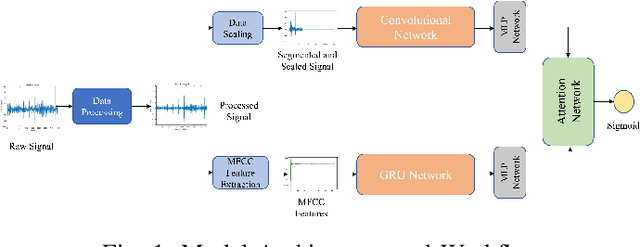
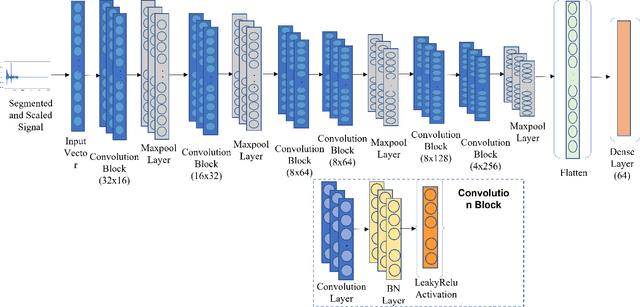
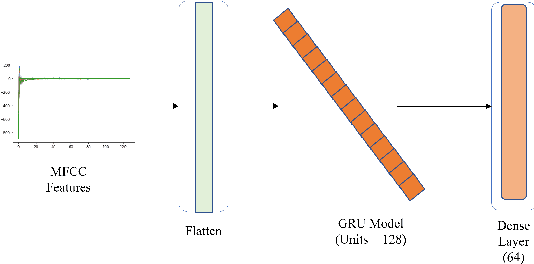
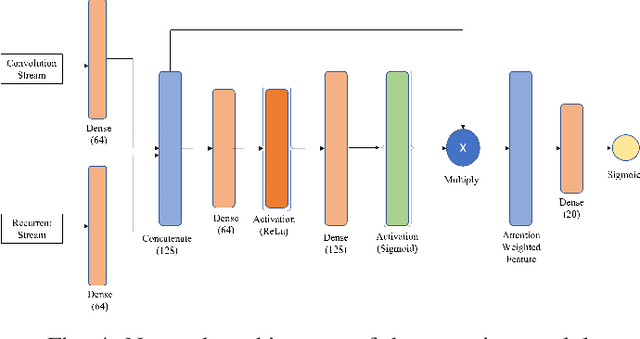
Abstract:Cardiovascular diseases are one of the leading cause of death in today's world and early screening of heart condition plays a crucial role in preventing them. The heart sound signal is one of the primary indicator of heart condition and can be used to detect abnormality in the heart. The acquisition of heart sound signal is non-invasive, cost effective and requires minimum equipment. But currently the detection of heart abnormality from heart sound signal depends largely on the expertise and experience of the physician. As such an automatic detection system for heart abnormality detection from heart sound signal can be a great asset for the people living in underdeveloped areas. In this paper we propose a novel deep learning based dual stream network with attention mechanism that uses both the raw heart sound signal and the MFCC features to detect abnormality in heart condition of a patient. The deep neural network has a convolutional stream that uses the raw heart sound signal and a recurrent stream that uses the MFCC features of the signal. The features from these two streams are merged together using a novel attention network and passed through the classification network. The model is trained on the largest publicly available dataset of PCG signal and achieves an accuracy of 87.11, sensitivity of 82.41, specificty of 91.8 and a MACC of 87.12.
SegCodeNet: Color-Coded Segmentation Masks for Activity Detection from Wearable Cameras
Aug 19, 2020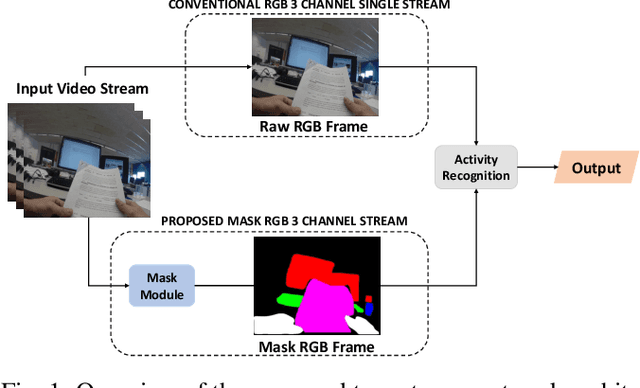

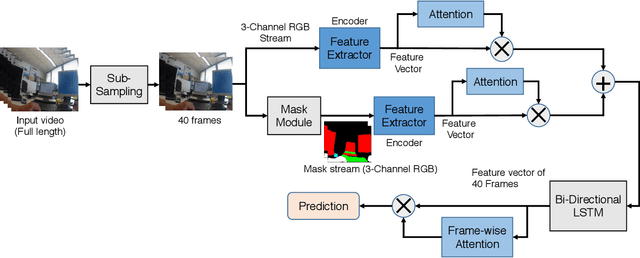
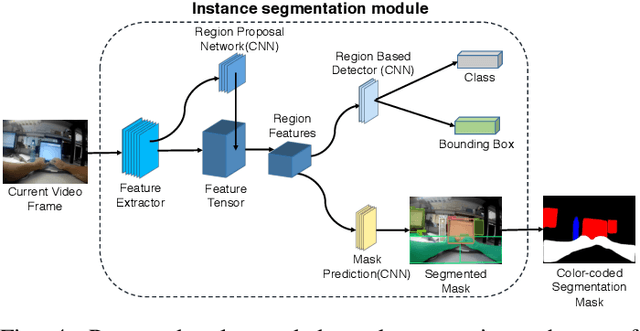
Abstract:Activity detection from first-person videos (FPV) captured using a wearable camera is an active research field with potential applications in many sectors, including healthcare, law enforcement, and rehabilitation. State-of-the-art methods use optical flow-based hybrid techniques that rely on features derived from the motion of objects from consecutive frames. In this work, we developed a two-stream network, the \emph{SegCodeNet}, that uses a network branch containing video-streams with color-coded semantic segmentation masks of relevant objects in addition to the original RGB video-stream. We also include a stream-wise attention gating that prioritizes between the two streams and a frame-wise attention module that prioritizes the video frames that contain relevant features. Experiments are conducted on an FPV dataset containing $18$ activity classes in office environments. In comparison to a single-stream network, the proposed two-stream method achieves an absolute improvement of $14.366\%$ and $10.324\%$ for averaged F1 score and accuracy, respectively, when average results are compared for three different frame sizes $224\times224$, $112\times112$, and $64\times64$. The proposed method provides significant performance gains for lower-resolution images with absolute improvements of $17\%$ and $26\%$ in F1 score for input dimensions of $112\times112$ and $64\times64$, respectively. The best performance is achieved for a frame size of $224\times224$ yielding an F1 score and accuracy of $90.176\%$ and $90.799\%$ which outperforms the state-of-the-art Inflated 3D ConvNet (I3D) \cite{carreira2017quo} method by an absolute margin of $4.529\%$ and $2.419\%$, respectively.
Privacy-Aware Activity Classification from First Person Office Videos
Jun 11, 2020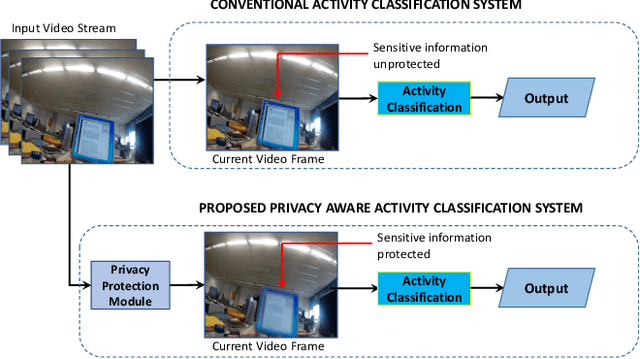

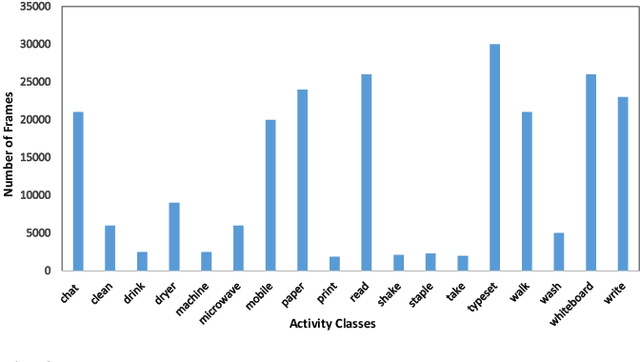

Abstract:In the advent of wearable body-cameras, human activity classification from First-Person Videos (FPV) has become a topic of increasing importance for various applications, including in life-logging, law-enforcement, sports, workplace, and healthcare. One of the challenging aspects of FPV is its exposure to potentially sensitive objects within the user's field of view. In this work, we developed a privacy-aware activity classification system focusing on office videos. We utilized a Mask-RCNN with an Inception-ResNet hybrid as a feature extractor for detecting, and then blurring out sensitive objects (e.g., digital screens, human face, paper) from the videos. For activity classification, we incorporate an ensemble of Recurrent Neural Networks (RNNs) with ResNet, ResNext, and DenseNet based feature extractors. The proposed system was trained and evaluated on the FPV office video dataset that includes 18-classes made available through the IEEE Video and Image Processing (VIP) Cup 2019 competition. On the original unprotected FPVs, the proposed activity classifier ensemble reached an accuracy of 85.078% with precision, recall, and F1 scores of 0.88, 0.85 & 0.86, respectively. On privacy protected videos, the performances were slightly degraded, with accuracy, precision, recall, and F1 scores at 73.68%, 0.79, 0.75, and 0.74, respectively. The presented system won the 3rd prize in the IEEE VIP Cup 2019 competition.
 Add to Chrome
Add to Chrome Add to Firefox
Add to Firefox Add to Edge
Add to Edge